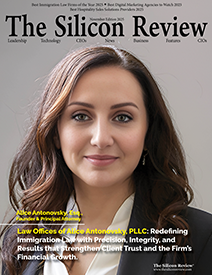>>
Industry>>
Telecom>>
Airborne Connectivity Heats Up...Airborne Connectivity Heats Up as American Airlines Deploys Free Inflight Wi-Fi
The Silicon Review
18 April, 2025
In a move set to redefine onboard connectivity expectations, American Airlines will begin offering free inflight Wi-Fi, signaling a new phase in the high-stakes telecom race to digitize air travel.
American Airlines has officially joined the inflight connectivity race by announcing plans to offer free Wi-Fi across its domestic fleet—a development poised to reshape traveler expectations and challenge telecom infrastructure partners to scale faster, smarter, and more seamlessly. The airline, which already offers paid Wi-Fi via providers like Viasat and Gogo, will now become one of the few U.S. carriers to remove the pay wall entirely, directly appealing to a generation of hyper-connected passengers. This strategic shift comes as the aviation and telecom sectors converge to address a common challenge: enabling seamless digital engagement 35,000 feet above ground. With air travelers expecting uninterrupted access to work, streaming, and real-time messaging, airlines are under pressure to integrate reliable, high-bandwidth connectivity without compromising flight economics or safety protocols.
The move positions American Airlines ahead of competitors who are still evaluating monetization models for in-cabin internet. It also amplifies demand for satellite internet providers, who must now rapidly scale bandwidth and latency performance to meet new standards of user experience. This surge in free-access inflight connectivity creates ripple effects through aviation tech supply chains and raises stakes for satellite telecom firms betting on next-generation low-Earth orbit constellations.
For telecom players, this is a defining moment to pivot from legacy infrastructure to automation-driven bandwidth allocation and dynamic network prioritization. Industrial automation and AI integration will be vital in ensuring signal integrity and user load balancing during high-demand periods, especially on coast-to-coast routes. As free inflight internet becomes a competitive differentiator, telecom and aviation firms alike must innovate collaboratively—ushering in an era where the digital passenger experience is not a luxury, but a baseline expectation.


_2025-11-17_06-38-14.webp)

 (1)_2025-10-21_13-35-14.webp)

_2025-10-02_10-21-48.webp)